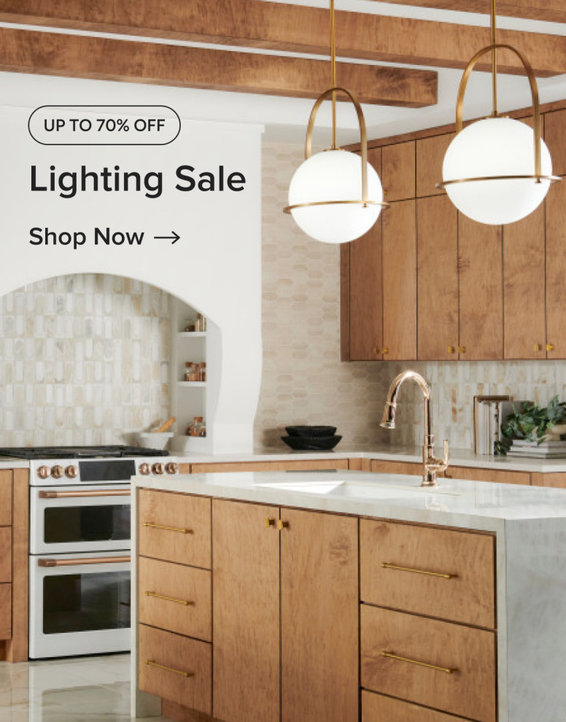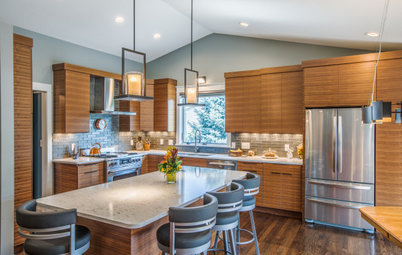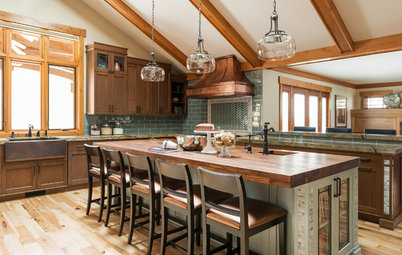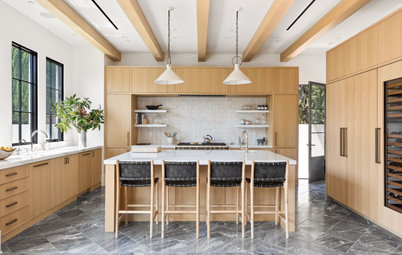See How 1 Kitchen Style Works With 5 Types of Wood
These contemporary kitchens show off the beauty of red oak, teak, apple wood and more
If you’re considering contemporary style for your kitchen, one challenge you may face is how to make it cozy. Choosing wood cabinets is one wonderful way to add warmth.
These five kitchens are contemporary, a design style characterized by clean lines, a lack of adornment and, often, a neutral color scheme. It’s the second most popular style for remodeled kitchens, according to Houzz research. Each kitchen shows a different type of wood cabinetry. Which material would you choose for your kitchen?
These five kitchens are contemporary, a design style characterized by clean lines, a lack of adornment and, often, a neutral color scheme. It’s the second most popular style for remodeled kitchens, according to Houzz research. Each kitchen shows a different type of wood cabinetry. Which material would you choose for your kitchen?
Flat-front white cabinets and a classic white hexagon tile backsplash keep the spotlight on the wood’s grain pattern. A slim three-quarter-inch countertop profile helps keep costs down, while simple stainless steel cabinet pulls quietly support the design. Vintage teak chairs (see previous photo) add more wood warmth, while yellow pendant lights introduce a cheery note.
Why it works. The red oak’s beautiful flat-cut grain brings an abundance of natural texture to this contemporary space, creating an atmosphere that’s at once modern and organic.
Durability. Red oak is strong and resilient. Its rating on the Janka scale — a measure of wood’s hardness — is 1,290, which is considered medium. Red oak is a readily available species and the benchmark against which all other wood species are compared.
How to Design a Warm Contemporary Kitchen
Why it works. The red oak’s beautiful flat-cut grain brings an abundance of natural texture to this contemporary space, creating an atmosphere that’s at once modern and organic.
Durability. Red oak is strong and resilient. Its rating on the Janka scale — a measure of wood’s hardness — is 1,290, which is considered medium. Red oak is a readily available species and the benchmark against which all other wood species are compared.
How to Design a Warm Contemporary Kitchen
2. Douglas Fir Veneer Plywood on Wall Cabinets and Island
Douglas fir has a straight, pronounced grain with a reddish-brown tint. Here a Douglas fir veneer was applied to a core panel of birch plywood. (Birch is a common plywood material.)
How it’s used. Designer Mark Williamson of Birkwood and client John Kinsley Architects collaborated on the design, applying book-matched plywood to the wall cabinets and island. Book-matching wood means pairing two or more surfaces so that the grains line up.
Douglas fir has a straight, pronounced grain with a reddish-brown tint. Here a Douglas fir veneer was applied to a core panel of birch plywood. (Birch is a common plywood material.)
How it’s used. Designer Mark Williamson of Birkwood and client John Kinsley Architects collaborated on the design, applying book-matched plywood to the wall cabinets and island. Book-matching wood means pairing two or more surfaces so that the grains line up.
Exposed plywood edges were sanded to a smooth finish and polished with wax to bring out the dimensions of the stacked plywood layers. This is true for the cabinet frames shown here, as well as for the plywood edges that show when the homeowner opens a drawer.
Supporting elements. Push latches on the upper cabinetry keep hardware invisible so that it does not detract from the wood grain. The plywood perimeter counter is laminated with white Formica, and the backsplash features the same white laminate, keeping the wood a focal point.
Supporting elements. Push latches on the upper cabinetry keep hardware invisible so that it does not detract from the wood grain. The plywood perimeter counter is laminated with white Formica, and the backsplash features the same white laminate, keeping the wood a focal point.
A glass countertop on the kitchen island showcases the homeowner’s collection of beachcombed glass, and the glass upper cabinets are colored to match. The window wall and ceiling are clad with solid pine.
Why it works. The simplicity of materials in this kitchen complements the room’s minimalist design. The overall look is one of raw sophistication.
Durability. Birch plywood is known for its durability and has three or more layers that add to its stability and strength. It has few knots or jagged edges and is unlikely to splinter or crack, making it a great choice for cabinets.
Work with a local architect on your kitchen
Why it works. The simplicity of materials in this kitchen complements the room’s minimalist design. The overall look is one of raw sophistication.
Durability. Birch plywood is known for its durability and has three or more layers that add to its stability and strength. It has few knots or jagged edges and is unlikely to splinter or crack, making it a great choice for cabinets.
Work with a local architect on your kitchen
3. Teak on Wall Cabinets, Island and Custom Range Hood
Teak varies from golden brown to deep rich brown with chocolate-colored marks and stripes. It has long been used for trim and furniture. During the middle of the 20th century, Danish furniture makers like Hans Wegner and Grete Jalk created teak furniture designs that are still on trend today. Teak is valued for its elegance and durability.
How it’s used. Designer Tiffiny Johnson of Peninsula Modern used book-matched teak for this kitchen’s cabinets as well as on the island and appliance panels. She also clad the range hood in teak.
Teak varies from golden brown to deep rich brown with chocolate-colored marks and stripes. It has long been used for trim and furniture. During the middle of the 20th century, Danish furniture makers like Hans Wegner and Grete Jalk created teak furniture designs that are still on trend today. Teak is valued for its elegance and durability.
How it’s used. Designer Tiffiny Johnson of Peninsula Modern used book-matched teak for this kitchen’s cabinets as well as on the island and appliance panels. She also clad the range hood in teak.
Supporting elements. Johnson chose slate-colored counters in PaperStone, a material made from recycled paper and resin that has long been used in science labs and schools and that is becoming more popular in homes. The backsplash is clay tile. Brass cabinet hardware and a brushed brass pot filler add a touch of elegance. Solid hickory floors provide a striking contrast with the teak.
Why it works. Teak is without a doubt the star of this contemporary kitchen. Paneled appliances keep the wood dominant, for an overall look of warm minimalism with midcentury modern appeal.
Durability. Teak is known for its durability and stability. Burmese teak (the most popular type) registers at 1,000 on the Janka scale. It has a high oil content that serves as a natural water repellent and makes it immune to rotting and fungi. It is also termite-resistant.
Find backsplash tile in the Houzz Shop
Why it works. Teak is without a doubt the star of this contemporary kitchen. Paneled appliances keep the wood dominant, for an overall look of warm minimalism with midcentury modern appeal.
Durability. Teak is known for its durability and stability. Burmese teak (the most popular type) registers at 1,000 on the Janka scale. It has a high oil content that serves as a natural water repellent and makes it immune to rotting and fungi. It is also termite-resistant.
Find backsplash tile in the Houzz Shop
4. Apple Wood Veneer on Wall Cabinets and Range Hood
Apple wood comes from an apple tree. Its grain may have darker and lighter bands of color.
How it’s used. In this kitchen, Roundhouse’s Craig Matson used vertical book-matched apple wood veneer for the upper cabinets, custom range hood cabinetry and floor-to-ceiling cabinets.
Apple wood comes from an apple tree. Its grain may have darker and lighter bands of color.
How it’s used. In this kitchen, Roundhouse’s Craig Matson used vertical book-matched apple wood veneer for the upper cabinets, custom range hood cabinetry and floor-to-ceiling cabinets.
Supporting elements. Matte white lacquer base cabinets provide a calm contrast to the dramatic grain of the apple wood. The perimeter countertops and backsplash are solid surface (Corian in Glacier White). The Arabescato Vagli marble island counter adds a luxurious feel to this contemporary kitchen.
Why it works. Minimalist selections for the cabinets, countertops and backsplash give the apple wood breathing room so that the grain does not overwhelm the space. The paneled refrigerator and minimal hardware keep the focus on the grain. A single white pendant light (see previous photo) adds interest. Together, these elements create an ethereal look and feel in this kitchen.
Durability. Apple wood has a rating of 1,730 on the Janka hardness scale, meaning it is a durable wood. In this kitchen, it is veneer, but it is glued to a stable substrate (plywood) unlikely to warp or split.
See more inspiring kitchen photos
Why it works. Minimalist selections for the cabinets, countertops and backsplash give the apple wood breathing room so that the grain does not overwhelm the space. The paneled refrigerator and minimal hardware keep the focus on the grain. A single white pendant light (see previous photo) adds interest. Together, these elements create an ethereal look and feel in this kitchen.
Durability. Apple wood has a rating of 1,730 on the Janka hardness scale, meaning it is a durable wood. In this kitchen, it is veneer, but it is glued to a stable substrate (plywood) unlikely to warp or split.
See more inspiring kitchen photos
5. Western Red Cedar
Western red cedar is characterized by warm coloring, a uniform, fine-grained texture and a satin luster. It has an attractive appearance and has historically been used for everything from canoes and totem poles to kitchen cabinetry.
Western red cedar is characterized by warm coloring, a uniform, fine-grained texture and a satin luster. It has an attractive appearance and has historically been used for everything from canoes and totem poles to kitchen cabinetry.
How it’s used. In this kitchen, architect Nick Deaver wrapped the wall and ceiling in western red cedar, and he clad the cabinetry in this wood. The two different grain appearances — one on the cabinets, another on and wall and ceiling — showcase the beauty and versatility of this material.
Supporting elements. Cool-toned materials including the Caesarstone counter, stainless steel backsplash, raw steel island end caps and stainless appliances temper the warmth of the wood.
Why it works. Simplicity is the key to this kitchen’s striking presence. Deaver kept the palette minimal, with almost everything either wood or metal.
Durability. Western red cedar is rated 350 on the Janka hardness scale, which means it’s not very resistant to dents. However, this wood has other qualities that make it desirable in terms of durability. It is highly resistant to decay, twisting, shrinking, warping and cupping. Building codes around the world classify western red cedar as a durable wood.
More on Houzz
See the transitional kitchen style with five different woods
Discover the top kitchen and cabinet styles in recent remodels
Find a kitchen and bath remodeler near you
Shop for kitchen fixtures
Supporting elements. Cool-toned materials including the Caesarstone counter, stainless steel backsplash, raw steel island end caps and stainless appliances temper the warmth of the wood.
Why it works. Simplicity is the key to this kitchen’s striking presence. Deaver kept the palette minimal, with almost everything either wood or metal.
Durability. Western red cedar is rated 350 on the Janka hardness scale, which means it’s not very resistant to dents. However, this wood has other qualities that make it desirable in terms of durability. It is highly resistant to decay, twisting, shrinking, warping and cupping. Building codes around the world classify western red cedar as a durable wood.
More on Houzz
See the transitional kitchen style with five different woods
Discover the top kitchen and cabinet styles in recent remodels
Find a kitchen and bath remodeler near you
Shop for kitchen fixtures































Red oak is a popular hardwood in North America and a dominant species in U.S. forests. It has a distinctive grain and gets its name from the tree’s leaf color in the fall (which explains why, despite the name, this wood is not always red in color). It’s considered a timeless classic and used in furniture, flooring, cabinetry and architectural millwork.
“Flat cut” refers to the way the wood in this kitchen was cut. This method creates a cathedral pattern, sometimes called peaks, on the face of the board.
How it’s used. Designer Lisa Lev used flat-cut red oak on the kitchen island, upper wall cabinets and tall pantry cabinet. The gables — or sides of the cabinets — are also red oak and nicely frame the white cabinets. The island’s matching red oak toe kick creates a floating effect and a soft transition to the engineered hickory flooring. Lev’s clients did not want island stools, so she created built-in shelving for kids’ books instead.
Supporting elements. Lev used white to balance the striking red oak with engineered quartz countertops (Organic White by Caesarstone). They have a clean, modern aesthetic that doesn’t compete with the wood.
Find an interior designer on Houzz to help with your kitchen